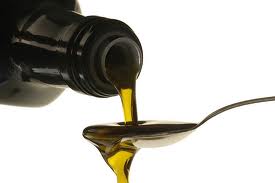 One of the most counterproductive aspects of growing high-quality medical marijuana is the use of insecticides and fungicides. Growers whose primary concern is producing a quality medicine for their patients understand the dangers of spraying toxic chemicals onto plant material that will eventually be consumed. Yet even the most meticulous growers find themselves batting unwanted pathogens at some point in their growing careers and it becomes inevitable that they must treat their gardens with something. This is why so many of them are looking to natural and organic pesticides that breakdown quickly and are safe for human consumption.
One of the most counterproductive aspects of growing high-quality medical marijuana is the use of insecticides and fungicides. Growers whose primary concern is producing a quality medicine for their patients understand the dangers of spraying toxic chemicals onto plant material that will eventually be consumed. Yet even the most meticulous growers find themselves batting unwanted pathogens at some point in their growing careers and it becomes inevitable that they must treat their gardens with something. This is why so many of them are looking to natural and organic pesticides that breakdown quickly and are safe for human consumption.
A popular natural treatment used by medical marijuana growers is neem oil. For years growers have been using neem oil as a treatment for various insects and fungus. More recently the active ingredient in neem, azadirachtin, has been isolated and used as the active ingredient in many commercially available pesticides. What really makes azadirachtin so effective is the way it works.
Azadirachtin is an organic substance that belongs to the class of organic molecules classified as tetranortriterpenoids. Azadirachtin is structurally similar to insect hormones called ecdysones. Ecdysones are the hormones that control the process of metamorphosis as the insect changes from larva to pupa to adult. Although they don’t know for sure, scientists believe azadirachtin acts as a “ecdysone blocker.” Because azadirachtin disrupts the unique role ecdysones play in metamorphosis, the insects are unable to molt and their life cycle is broken. Azadirachtin also works as a feeding deterrent. Many insect varieties seem to be able to sense the azadirachtin on the plants and refuse to feed.
Products that contain azadirachtin are a great choice for the conscientious medical marijuana grower. If you choose to go the azadirachtin route, there are a few things you should be aware of. First, azadirachtin is not a contact killer like many other insecticides. The insects must absorb or ingest some of the compound to be affected. Depending on the particular pest’s life cycle it could take as long as 5-7 days to see the results from the first treatment.
Another important thing to note when using azadirachtin is that multiple treatments are usually required for complete eradication. This is especially true when there is a serious pest infestation. Plan on treating your garden at least three times, usually with three to seven days between treatments. For total coverage, an atomizer sprayer works best. Watch for leaves that appear wrinkled as this is a sign that the stomata are getting clogged. If this occurs, rinse the leaves with luke warm water and then continue the treatment program once the leaves appear normal again.
From: bigbudsmag.com




